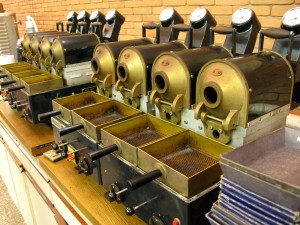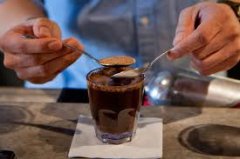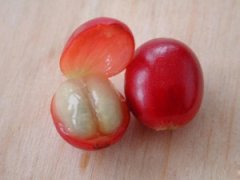Roasting experience of Panamanian coffee raw beans what baking degree do Panamanian beans want?
Panamanian coffee beans in roasting to reach 1 burst dense out of beans, can be shallow, but not over 1 burst.
Here's a baking curve to avoid some expensive mistakes:
Let's start with 1 explosion and 2 explosion.
After 1 explosion, it means that no more "bang" sound can be heard after the explosion.
Many people have also asked about the difference between the first explosion and the second explosion. We found that one thing to pay attention to is to achieve "dense": if the beans are baked unevenly, it is easy to blend into 2 bursts if the beans are not dense.
1 explosion is like a bullet to start, "explosion" after a few seconds, "explosion" after a few seconds, and then you will hear "explosion, explosion" this is not dense explosion. The sound of 1 burst is from scattered to dense, and then to scattered, and before it stops, it will be denser again, and the second time it will be hit by 2 explosions.
Brista Coffee West Point training School beans will lose a lot of its colorful flavor when they explode in 2. If you mix 1 and 2 explosions, part of your beans will be carbonized and some of them will still be developing. Such beans are easy to taste bitter when they are flushed by hand.
Is it possible that the explosion is not dense? That's for sure. If the beans are right and the baking is right, it must be possible. You happen to mix well-flavored shallow beans with deeper mellow beans, and the proportion is perfect. There will be good beans. But in practice, how many people can control the distribution of the beans? Can the uniformity be the same every time? In addition, even if the skilled baker answers yes. The next time this bean has a little more moisture due to environment, storage, processing or other reasons, its density has changed a little bit due to nutrition, and its distribution has changed a little bit-can you still guarantee it? Therefore, in order to stabilize the production, we advocate that it should be intensive first.

Important Notice :
前街咖啡 FrontStreet Coffee has moved to new addredd:
FrontStreet Coffee Address: 315,Donghua East Road,GuangZhou
Tel:020 38364473
- Prev

Introduction to the characteristics of Panamanian coffee beans description of the flavor and taste of 90 + Rosa coffee beans
Lychee and cello (LycelloW2) [Origin]: 90 + Panamanian Rosa Manor [season]: 2013 to 2014 [Variety]: Rosa [Level]: 21 [altitude]: 1250m-1650m/ [treatment]: washing [Flavor]: on the basis of the flavor of the rose seed itself, it shows rich aromas of green tea, musk and basil herbs.
- Next

[90 + boutique coffee] Hatchilla HachiraN2
HachiraN2 [Origin]: 90 + Ethiopia Achira (Achilla) producing area. [season]: 2013-2014 [variety]: Ethiopian native species [Level]: 12 [altitude]: 17502000m [treatment]: sun [flavor]: full of floral smell, obvious sense of fruit juice, with the wind of elderberry, BlackBerry and basil herbs.
Related
- Detailed explanation of Jadeite planting Land in Panamanian Jadeite Manor introduction to the grading system of Jadeite competitive bidding, Red bid, Green bid and Rose Summer
- Story of Coffee planting in Brenka region of Costa Rica Stonehenge Manor anaerobic heavy honey treatment of flavor mouth
- What's on the barrel of Blue Mountain Coffee beans?
- Can American coffee also pull flowers? How to use hot American style to pull out a good-looking pattern?
- Can you make a cold extract with coffee beans? What is the right proportion for cold-extracted coffee formula?
- Indonesian PWN Gold Mandrine Coffee Origin Features Flavor How to Chong? Mandolin coffee is American.
- A brief introduction to the flavor characteristics of Brazilian yellow bourbon coffee beans
- What is the effect of different water quality on the flavor of cold-extracted coffee? What kind of water is best for brewing coffee?
- Why do you think of Rose Summer whenever you mention Panamanian coffee?
- Introduction to the characteristics of authentic blue mountain coffee bean producing areas? What is the CIB Coffee Authority in Jamaica?

